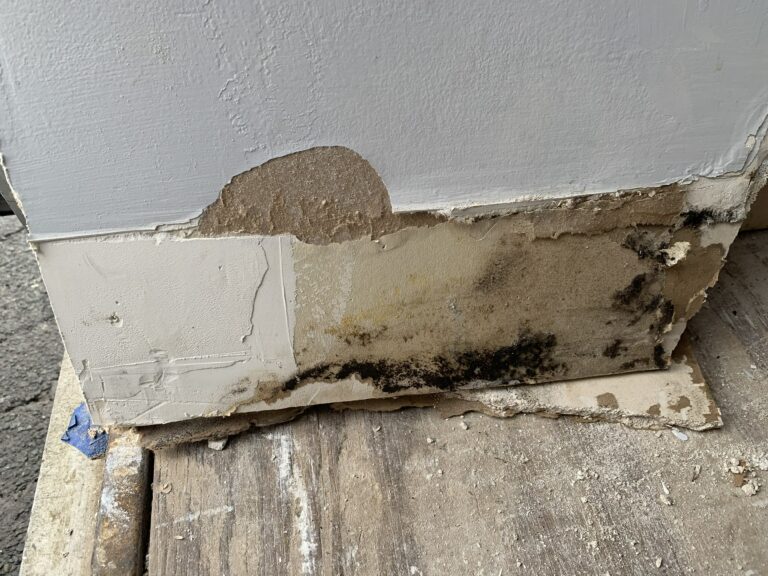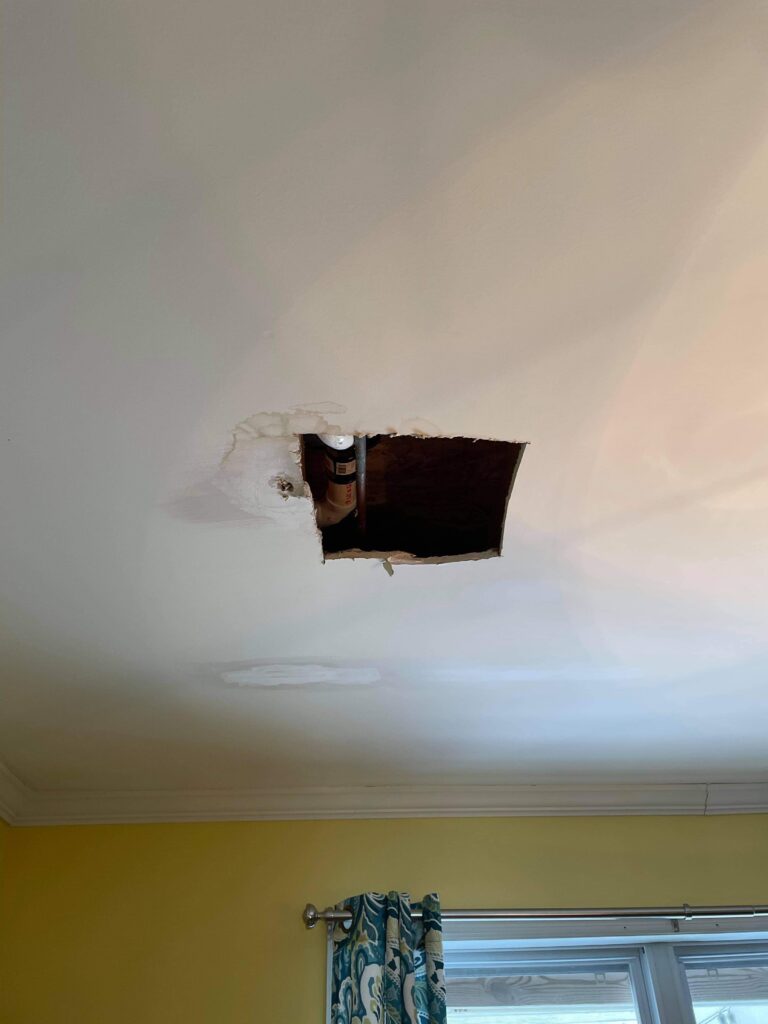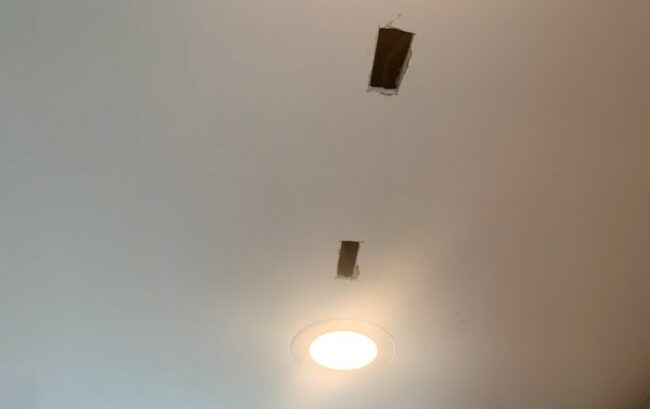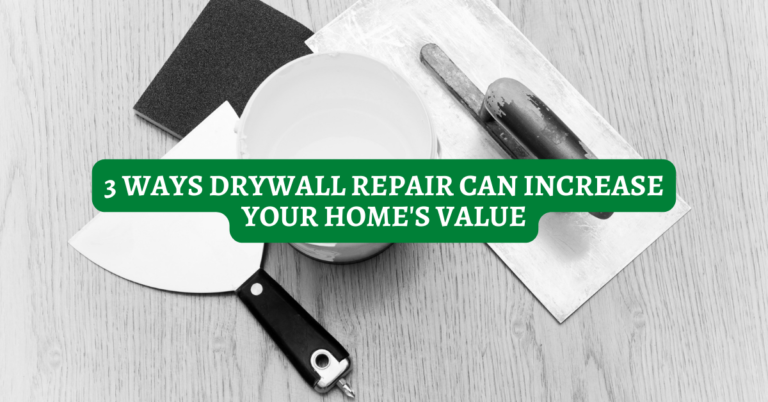How to Patch Small Drywall Holes
Small drywall holes are a common nuisance, whether they’re caused by doorknobs, nails, or general wear and tear. Thankfully, with a few simple tools and some basic technique, you can restore your walls to their former glory in no time. In this guide, we’ll walk you through the process of repairing small drywall holes, incorporating pro tips, common mistakes to avoid, and recommended tools. Let’s dive in!
Understanding the Types of Drywall Holes
Before starting the repairs, it’s important to understand the types of holes you might encounter:
-
- Nail Holes: Small and typically round, these usually need minimal repair.
-
- Dimple Holes: Caused by the head of a screw or nail indenting the drywall.
-
- Larger Holes: For holes that are over 1/2 inch in diameter, a patching technique will differ from that of nail holes.
Tools and Materials You’ll Need
Tools:
-
- Putty Knife: A flexible blade usually around 6-12 inches in length, ideal for applying joint compound.
-
- Screwdriver: Useful for removing any screws or nails that might be causing structural damage.
-
- Sandpaper or Sander: For smoothing the repair once it’s dry.
Materials:
-
- Joint Compound: You can use products like 3.5 Qt All Purpose Compound or 3.5 Qt Plus 3 Compound for this.
-
- Mesh Tape: A self-adhesive tape that provides additional strength to your patch.
-
- Primer and Paint: For touch-ups after your repair is complete.
Step-by-Step Guide to Patching Small Drywall Holes
If you have larger holes, check out my full guide here.
Step 1: Prepare the Area
First, gather your tools and materials. Ensure that the area around the hole is clean and dry. If there is loose paint or drywall around the hole, use a utility knife to carefully trim away any debris.
Step 2: Apply Joint Compound
Using your putty knife, scoop a small amount of joint compound and apply it into the hole. For nail holes, simply fill them with the compound, and for dimple holes, you may wish to use mesh tape over the hole before applying the compound. Spread it evenly and feather the edges to ensure a smooth finish.
Step 3: Allow to Dry
Let the joint compound dry completely. Depending on the size of the hole and the climate, this could take anywhere from a few hours to overnight. If you’re impatient, you might want to consider using quick-dry compounds.
Step 4: Sand the Area
Once the compound is dry, lightly sand the surface using fine-grit sandpaper. Your goal is to create a smooth area that blends well with the surrounding wall. Remember to wear a mask during this step to avoid inhaling dust.
Step 5: Prime and Paint
To finish the job, apply a coat of primer over the patched area. Priming helps seal the repair and allows the final coat of paint to adhere better. Once the primer dries, paint over the patch to match the color of your wall.
Pro Tips for a Flawless Finish
-
- Choose the Right Compound: If you’re unsure, opt for a lightweight compound for small repairs as it’s easier to sand.
-
- Multiple Coats: For larger repairs, consider applying multiple thin layers of compound rather than one thick layer to prevent cracking and ensure a smooth finish.
-
- Color Matching: Bring a sample of your wall’s paint to the store if you’re unsure about color matching.
Common Mistakes to Avoid
-
- Skipping the Drying Time: Always ensure that each layer is fully dry before sanding or applying additional coats.
- Using Too Much Compound: While it’s tempting to over-apply, using too much can lead to uneven surfaces. Thin layers are your friend.
- “Forgetting” to Sand: Skipping the sanding step can result in an uneven finish that’s visible after painting.
Additional Techniques for Larger Holes
For holes larger than 1/2 inch, you’ll need to take additional steps. For instance, you may need a backing plate made of wood or metal to ensure proper support for the joint compound. The process might look something like this:
1. Cut a Patch
Cut a piece of drywall that extends at least an inch beyond the hole in all directions.
2. Secure a Backing
Insert a triangular cut of wood inside the hole to support the edges of the new drywall patch.
3. Tape and Compound
Use mesh tape around the edges of the patch and apply joint compound in layers as outlined above.
FAQs About Drywall Repairs
How long does it take for the compound to dry?
Typically, lightweight joint compounds can dry in 1-3 hours if heat or a fan is used, while standard compounds may take longer. Always check the product label for specific drying times. The safest bet is to wait 12-24 hours.
Can I use spackle instead of joint compound?
Yes, spackle is great for small repairs, especially tiny holes and dimple holes, but it may not be suitable for larger patches.
Final Thoughts on Drywall Repair
Repairing small drywall holes doesn’t have to be an arduous task. With the right tools, materials, and techniques, you can easily achieve professional-looking results in no time. Don’t forget to check out these related articles for more tips and tricks:
Share & Resources
If you found this guide helpful, please share it on Pinterest, Facebook, or Reddit! Your support helps others find useful drywall repair techniques.
Contractors, home improvement bloggers, and DIY forums: Feel free to link back to this article to help your audience with expert drywall repair tips.
Together, let’s empower our communities with the knowledge to improve our homes, one drywall project at a time!






